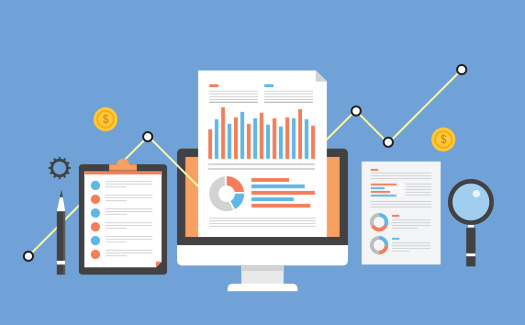The data science wave is swelling: The global big data analytics market, which was at $240.56 billion in 2021, is set to breach $655 billion by 2029. While it’s easy to see the value of data science, it’s not so easy to figure out what kind of data science model you should implement—a pre-built, custom, or hybrid system. Here’s a look at how these data science solutions stack up in the context of risk management and the role RMIS software can play in helping you surf the data wave.
What Is a Pre-built Data Science Model?
A pre-built data science model is a plug-and-play system for analyzing the data your company produces and collects. It would come with all of the tools you need to derive insights from the data you have—all you have to do is make sure the right data gets in the system.
Pre-built data science models may fit a range of insurance companies’ business models, for example, making them a solid solution for a broad swath of companies, regardless of the kinds of clients they cater to. For instance, a pre-built model may assess the risk of workplace accidents based on historical incident data. It would then be able to highlight the clients that run the highest risk of having an accident at their facility that could result in claims. While not necessarily “simple,” this is a relatively straightforward data model that would apply to many insurance companies.
The Limitations of Pre-built Data Science Models
In some cases, a pre-built system can be one that’s been designed for another company yet still be a good fit for yours. If your organization uses data in the exact same way, then the pre-built solution could be as effective for you as it was for them.
But the chances of a pre-built solution meeting your unique business needs are low. The number of pre-built models that align with your operations may only comprise a small percentage of all that data science can do for your company. For this reason, some try to create custom systems.
What Is a Custom Data Science Model?
A custom data science model is one that you either have internal data engineers build or hire an external provider to craft for your business. In this way, you get one that fits your business model precisely.
With a custom model, you will typically tell the team constructing it what you want to accomplish and how you’d like to use data to meet key objectives. They then take that info and build your solution. A skilled data scientist may even be able to recommend different ways of leveraging your data to meet some of your high-level goals.
This makes it an effective solution for companies with very unique needs. For example, suppose a self-insured manufacturer builds circuit boards and its risk management team wants to use data to minimize the number of product liability claims. In this way, the organization can not only reduce the number of business-interrupting incidents, but it can also save money on insurance.
But there are a ton of different kinds of product liability claims, and each results from a different cause. For instance, one client may claim that a circuit board the manufacturer built didn’t have a strong enough onboard processor, which overburdened their computer and caused it to overheat and burn out. At the same time, another company claims that a malfunction in the logic of a board caused a robot on an assembly line to malfunction.
The first issue may stem from poor SoC (system on chip) design, and the second problem could be caused by mistakes in the chip’s overall architecture. Or something else altogether.
They could hire someone to create a custom data science model that tracks incidents and attributes them to different phases of either the development process or the business’s operational model.
The Problems with Fully Custom Data Science Models
Customized data science models are expensive and time-consuming. Hiring a data science team can come with escalating costs. Also, to get the solution just right, you have to pay—and wait—for the entire development life cycle to play out. This could take many months. For these reasons, many opt for a hybrid of a pre-built and customized data science model.
What Is a Hybrid Data Science Model?
A hybrid data science model comes with pre-built data science structures that you can use as the foundation of your own data analysis system. You then decide how you want to use it to benefit your business. With the right hybrid model, you get a low- or no-code solution and may not need to hire anyone outside your organization and the provider to get it up and running. At the same time, you also get the ability to make your own custom scripts with common programming languages, such as Python or R.
For example, with a hybrid data science model, you can choose from a library of pre-existing algorithms that have already benefitted hundreds of risk management systems. You can then customize how the system visualizes the data, make your own dashboards, and make your own storyboards.
With Ventiv, you get a hybrid data science system that gives you the freedom to use pre-built solutions and hit the ground running, design a customized solution with a library of algorithms, or even do your own programming. As a result, you ensure your organization has an effective solution quickly while minimizing cost and slashing development time. To learn more about how Ventiv keeps you at the forefront of the data movement, connect with Ventiv today.










